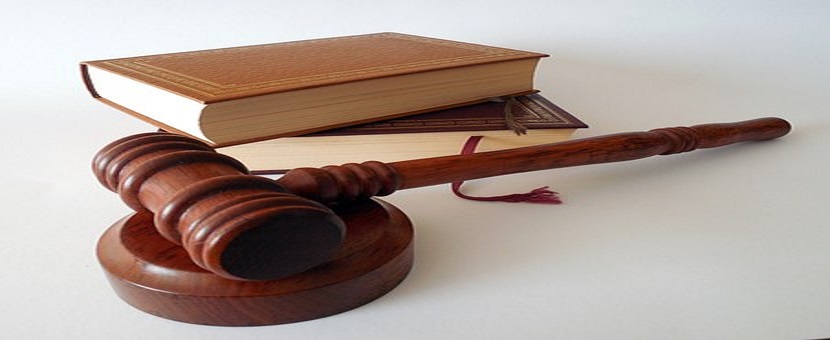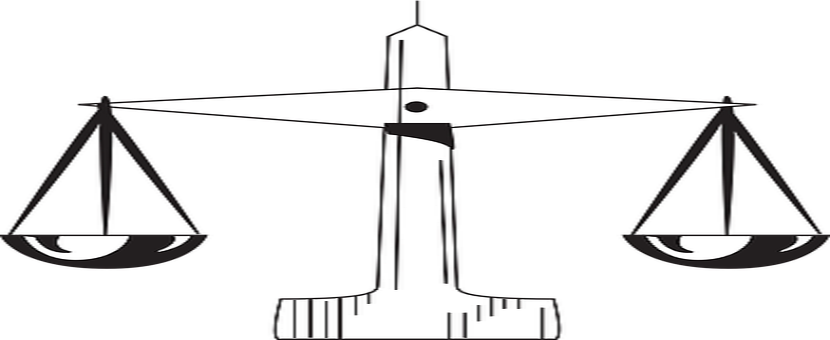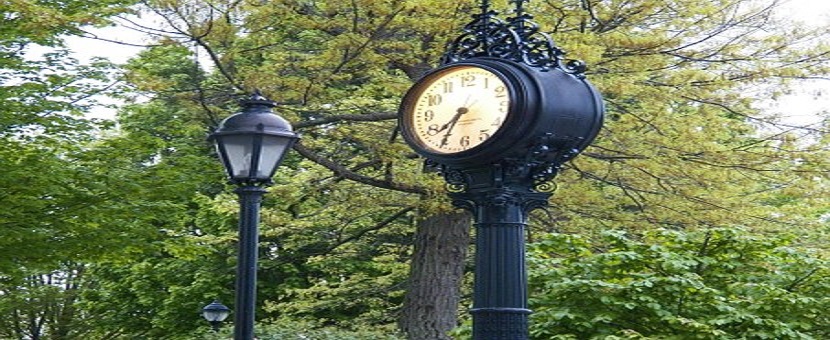‘…Nobody knows, until a case has come to trial, what will emerge from all the “authorities”… Every lawyer is aware of points on which the authorities are conflicting and obscure, and as precedents multiply, so do the conflicts and obscurities’. Sir Carleton Kemp Allen (Case Law: An Unwarrantable Intervention (1935) 51 LQR 333).

Olabisi Olajide Esq., an Associate at Abiodun Layonu & Co., (Legal Practitioners & Insolvency Practitioners) writes from Lagos. richardolabisi@gmail.com
Introduction
The doctrine of judicial precedent in Nigeria, like in any other common law jurisdiction, is designed to achieve consistency and predictability. Legislations most times speak to hypothetical situations. This is especially when legal draftsmen draft to also capture unforeseeable future circumstances which most times are a veritable source of uncertainty. Hence, the duty of the courts to apply the law to real situations as they are met in cases confronting them becomes imperative. In doing this however, it must be noted that the powers of the court are not at large. The duty of the Court must be or must appear to be limited to giving effect only to the intention of the Legislature. As put by Lord Denning in the case of Seaford Court Estate Ltd v. Asher (1949) 2 K.B.481, the court’s duty is to “iron out the crispness” in the law without altering the fabric in which the law is woven. The courts therefore, must not be accused of usurping or substituting their views or opinions with that of the Legislature, not even with the aim of doing justice or substantial justice. Otherwise, the cases coming up in court would be matter of one judge, one opinion, and one law, which will definitely lead to a situation where the legal sphere becomes clogged by a myriad of single instances. The lawyers, operating most times under the tyrannical influence of drive for revenue, would mostly derive utility in the confusion by creating a state of one man, one machete, or better put, a case of “you cite your own authority, I cite mine”, albeit conflicting. Orderliness should not be expected in such a system.
In a bid to avoid these extremes, the courts have been enjoined to either cling tenaciously to the wordings of the statute or abide by the interpretation of the law given by the superior Courts in line with the age long principles of stare decisis. The utility in this principle is that, no matter how novel a case is, there are principles somewhere in the precedents which can always furnish a guide in reaching a just conclusion. As far back as 1986, the Supreme Court clearly recognised the cohesive and adhesive impact of following precedents on the corpus of Nigerian Law. In Ekperokun v. UNILAG (1986) 4 NWLR (Pt.34) 162 at p. 193:
Standing by a previous decision which has not been proved to be perverse, or to have been decided per in curiam or prove to be faulty or procedurally wrong has a lot of advantages. It fosters stability and enhances the development of consistent and coherent body of law. In addition, it preserves continuity and manifest respect for the past. It also assures equality of treatment for litigants similarly situated. It likewise spares the judges the task of re-examining rules of law or principles, with each succeeding case, and fondly it affords the law a desirable measure of predictability.
Though the benefits of a settled and ascertainable system of laws were aptly captured by the Law Lords of the apex court in the above cited case and the numerous others, it is doubtful whether the practical implications and far reaching consequences of failure to abide by precedents have been fully realised by Nigerian courts, especially the lower courts. Notably, in Dalhatu v. Turaki [2003] 15 NWLR (Pt.843) 310 at p. 331 paras E-F, the Supreme Court stressed that a refusal, by a Judge of the court below to be bound by the Supreme Court decision, is a gross insubordination.
It must be mentioned that although lower courts have not totally shown full obedience to the principle of judicial precedent as would be shown below, in some other cases, lower courts have shown seemingly indiscriminate following of precedent without embarking on the exercise of properly distinguishing cases or considering the applicability of cited authorities in order to determine whether or not it must be bound by it in such given circumstance. Even the apex court sometimes, hand down conflicting decisions without expressly overruling themselves or convincingly justifying their failure to follow previous decisions.
Notwithstanding the settled principle of judicial precedent, the decision of the Lagos Division of the Court of Appeal in Sifax Nigeria Ltd. v. Migfo Nigeria Ltd. [2015] All FWLR (Pt. 803) 1857, (“ Sifax’s Case”) on Limitation of Action bears eloquent testimony to the fact that as far as following precedent is concerned decision, we must say, has generated so many questions and unsettled so many settled positions of the law on Limitation of Action that it appears to have single-handedly “overruled” virtually all Supreme Court decisions on the subject matter.

Inspired by the foregoing situation, the focus of this article is to consider the provisions of the statute which was the subject of the decision of the Court in of Sifax’s Case (to wit; the Limitation Law of Lagos State), vis-a-viz the interpretation given to same by the Supreme Court and even the Court of Appeal. This ordinarily implicates the determination of whether there is any provision in the statute under consideration donating to a court the power to freeze time as the Court of Appeal held in the circumstances of the Sifax’s Case. The article also analyses the principles on which the decision were based and discusses them along with some decisions of both the Court of Appeal and the Supreme Court on the principles of Limitation of Action and other allied issues. It concludes that the Sifax’s Case was decided per in curiam, as it cannot stand side by side with Supreme Court pronouncements on the point and other connected principles of law.
Facts of the Case:
The facts of the case relevant to this discourse briefly stated are that the Respondents initially commenced an action at the Federal High Court and Judgment was entered in favour of the Respondents, which decision was affirmed by the Court of Appeal. But on a further appeal to the Supreme Court, the Defendants (then Appellants) contended for the first time that the Federal High Court lacked jurisdiction to entertain the matter in the first place being a case of simple contract. This point was taken and upheld at the Supreme Court and the suit was eventually struck out. The Respondents (now Claimants) filed a fresh suit at the High Court of Lagos State and the Defendants again challenged the suit on the ground that it was statute-barred pursuant to Section 8 (1) (b) of Lagos State Limitation Law (“the Law”).
In a considered ruling, the trial Court, although accepting that as at the time of filing the fresh suit, the 6 year period provided in Section 8 (1) (b) of the Law had elapsed; however held that since the time initially spent at the Federal High Court by the parties would not be taken into consideration in computing time limit, the suit was not statute-barred. On appeal, the Court of Appeal affirmed the trial Court’s decision on the ground that since there was an element of fraud, the cause of action only accrued when the fraud was discovered which made the Respondents’ action to be within time, even after filing the suit afresh. However, the Court did not end it there, but went further, relying on a book, Limitation Periods (7th ed. London: Sweet & Maxwell; 2014) by Professor Andrew McGee, and the case of Alhaji Haruna Kassim (Trading as Cash Stores) v. Herman Ebert (1966-69) NNLR 75 (Kassim’s Case) to hold that even apart from the issue of fraud:
Where an aggrieved person commences an action within the period prescribed by the statute and such action is subsequently struck out for one reason or the other without being heard on the merit or subjected to an outright dismissal, such action is still open to be recommenced at the instance of the claimant and the limitation period shall not count during the pendency of the earlier action. In other words, computation of time during the pendency of an action shall remain frozen from filing of the action until it is determined or abates. See page 1901, paras. C-D.
In reaching this conclusion, the Court predicated its decision chiefly on the point that when a suit is struck out, it is still preserved on the Court’s General Cause List. At page 1910, paras. A-B, the Court further elucidated on its reasons as follows:
Where a matter is struck out, it is still alive and kept in the Court’s general cause list… in my modest view, it follows that the revival of the action after it had been struck out was still the continuation of the same action that was struck out, so the stoppage of time during the pendency of the action that was struck out would count in favour of the renewed action at the court with the requisite jurisdiction of the Court below.
When a period of limitation begins to run, does the statute allow it to be frozen or extended?
The first area of difficulty as would be shown is that the decision in Sifax’s Case does not sit well with the express provisions of the Law and does not reflect the intention of the draftsmen. In order to properly drive home this point, there is need for some clarifications as per the interplay of the operations of a cause of action and period of limitation in relation to an accrued right to sue. The Supreme Court has defined “a cause of action” in plethora of cases. In Mrs. O. Adekoya v. Federal Housing Authority [2008] 11 NWLR (Pt. 1099) 539 at 551 paras. D-F, the Supreme Court defined it to mean: “…the fact or facts which establish or give rise to a right of action – it is the factual situation which gives a person a right to judicial relief.” In simple words, a cause of action accrues whenever there is a reason or reasons to act or causes to act.
It is a well worn position of the law that the issue of when a cause of action arises or has accrued is always a function of the facts of the case which give rise to a right of action that entitles a person to judicial reliefs and that it varies from case to case. See the Supreme Court case of Egbe v. Adefarasin (No. 1) [1987] 1 NWLR (Pt.47) 1. However, the issue relating to when time begins to run against an already accrued cause of action is entirely a matter of law. Generally, time begins to run in respect of a cause of action, immediately the cause of action arose. See A.-G., Adamawa State v. A.-G., Federation [2014] 14 NWLR (Pt.1428) 515.
There are some instances where a cause of action that had accrued would not have a time limit running against it because of the existence or otherwise of some factual situations like the issue of fraud or mistake, disability, etc. or where a new cause of action against which the time limit would run is created. For instance, if a cause of action is fraudulently concealed, the law is that time would not run until the fraud is discovered. See Section 34 of Limitation Law of Lagos State and Section 33 of the Limitation Act (applicable in the Federal Capital Territory). It must however be noted that in such instances as stated above such as fraud, the cause action cannot be said to have arisen on the date the fraud was discovered. In actual fact, the cause of action arose the date the fraudulent act was committed, only that time would begin to run the date it was discovered. In some decided cases in our case law, much attention is not being paid to espousing this sly point.
Thus, the accrual of the cause of action is usually confused with the running of time by shifting forward the time of accrual of a cause of action to the time the statute provides that the time should begin to run in such cases. See the case of NPA Plc v. Lotus Plastics Ltd [2005] 12 SC (Pt.1) 19 at p. 27. In Sifax’s Case, the Court of Appeal, with respect, missed this important point when, though having correctly stated the law that the element of fraud operated to prevent the time from running, it however blurred this distinction by holding that the cause of action accrued on the discovery of the fraud. See pp. 1896-1898, paras. D-B. This is not the position.
By the facts of the case, the cause of action had accrued right from the time the Appellants allegedly were said to have secretly incorporated a company contrary to the Memorandum of Understanding between the parties. That was the time when the facts constituting the breach occurred and not when the breach was discovered which in line with the definition of the cause of action as given in the plethora of cases. See the cases of Jallico Ltd. v. Owoniboys Tech. Services Ltd [1995] 4 (Pt. 391) 534 at 547; Statoil (Nig.) v. Inducon (Nig.) Ltd [2014] 9 NWLR (Pt.1411) 43 at 84.
The Significance of the above to our discourse is that the mere fact that in those exceptional cases under Part III of the Law relating to fraud, mistake, or disability e.t.c. the period of limitation is said to begin running from the date the fraud was discovered does not mean that the statutory time limit was ipso facto extended. Such exceptions (that is, to the effect that time begins to run immediately a cause of action arises) implies only that the limitation period in those circumstances will not run at all (though there is an existence of a valid cause of action) until there is in existence a factual situation such as the discovery of the fraudulent act that gave rise to the cause of action. In order words, time cannot be said to have extended in such a situation. Similarly, in a situation where the right to enforce repayment of a debt has become statute-barred, a subsequent acknowledgement of the said debt is capable of reviving the cause of action. Such acknowledgment triggers a new right of action only. See Section 38 of the Law. This too does not mean that the period of limitation was thereby extended.
This brings to fore the unmistakable or rather unavoidable intention of the legislature that the moment a period of limitation begins to run, it runs from that day onward and is unhindered by any subsequent liability in any form either occasioned by wasting time in wrong forum or in protracted negotiation. Thus, throughout the length and breadth of the Law, there is no section where it is provided that time that has started running against a valid cause of action in a case of simple contract could be stopped, frozen or extended. In fact, no section of the Law uses the word “extension” or that the computation of time during the pendency of an action shall remain “frozen” as used by the Court of Appeal. This shows that the statute in that circumstance does not allow for extension of limitation period after it has started running. In the case of Sanda v. Kukawa Local Government and Anor. [1991] 2 NWLR (Pt.174) 379 at 642, the Supreme Court, per Nnaemeka-Agu, J.S.C. affirmed this position when it stated the law aptly as follows:
For the period of limitation of action under the section is tied to the date of accrual of the cause of action and will run from that date. [Underlining supplied]
The only extension which may be called an extension indeed (as it operates to extend time limit or exclude some period of time after time has started running) is as it relates to the enforcement of an arbitral award. Section 8 (1) (d) of the Law provides that an action to enforce an arbitral award shall not be brought after the expiration of six years. However, an exception exists under Section 64 of the Law where the court is empowered to discountenance the period spent in arbitration for the purpose of computation of time, if an award from such exercise is declared not applicable to the arbitral submission, for example, after being set aside. Notably, this exception in Section 64 is not applicable to cases of simple contract as in Sifax’s Case (which is separately stated in Section 8(1) (a) of the Law) and no similar exception is provided for in any other section of the Law. This shows that the statute is quite clear as to when it allows an extension of a limitation period or exclusion of certain period in computation of time. It is therefore respectfully submitted that the Court of Appeal in Sifax’s Case was wrong when it held that “computation of time during the pendency of an action shall remain frozen from filing of the action until it is determined or abates”. There is nothing in the Law that provides for or supports such holding by the Court. Effectively, if the lawmakers had such intention in mind, the Law would have made provision for same.
In the case of Ogboru v. S.P.D.C. (Nig.) Ltd. [2005]17 NWLR (Pt.955) 596 at 619-620, paras H-B, one of the questions which confronted the Court was whether time that had started running against a valid cause of action could be frozen by subsequent act of fraud of a party, the Court of Appeal answered in the negative when it held as follows:
…The period of limitation therefore begins to run from the date on which the cause of action accrued and the period is not broken by any subsequent accruing disability. [Underlining supplied]
However it must be noted that the above does not suggest that the period of limitation would run forever without any possibility of being stopped. Definitely, the timely filing of a valid action in court brings to an end any issue of limitation.
Whether a suit that was struck out based on a defect that goes to the root of jurisdiction is still pending in the Court General Cause List and thus can stop time from running?

It is not in doubt that when an action is brought within the time prescribed by law, then the action cannot be caught by the statute of limitation. However, such a suit must be a valid. This is the point where the Court of Appeal in Sifax’s case, with respect, misapplied the law. The Court misinterpreted the position of the law as stated by Professor McGee in his book titled Limitation Periods 7th ed. London: Sweet & Maxwell; 2014 at page 29, where the learned Professor said:
…..Time ceases to run when the Plaintiff commences legal proceedings in respect of the cause of action in question. It is a general principle of some importance that the bringing of an action stops the running of time for the purpose of that action only. [Italics supplied]
Clearly, the learned author was not laying down any new principle but “a general principle of some importance” as it is also known in Nigerian jurisprudence, that commencement of an action stops the running of time. In fact the second part of the quote does not even leave anyone in doubt as to the position of the law. It states that “for the purpose of that action only.” This means that time ceases to run particularly for the purpose of a particular suit that has already been filed. It is submitted that, if as a result of any subsequent accruing liability, a new suit is filed, the time limit is not stopped or could not have been stopped against that new action even if it is in respect of the same cause of action. The law is that a single cause of action may even give rise to different rights of action. Take for instance, a breach of contract and an action in tort. That is why in most times what the limitation period bars is not the cause of action but the right of action. A suit that is filed in one, say contract, stops time only in respect of that action only, and if for a whatever reason, a new suit is filed because the party exercises his right to bring another action for instance in tort, or for the reason that the former one was struck out, it is a new and distinct exercise of right action to which the time limit provided in the statute for that item of action must independently apply. It therefore flows from the foregoing that at anytime the right is exercised; the implication of law in respect of time limit must be activated. This is especially as limitation periods for different right of actions varies. This may lead to situation where a head of claim in one right to be barred without other(s) being barred.
The untenable implication that would result if the Court of Appeal’s reasoning is accepted is that, the mere filing of a suit in respect of a cause of action will operate to stop time limit in another or subsequent action based on the same cause of action. This, it is submitted, cannot be the law. Merely looking at the position relied on by the Court would have been enough to show that it does not have its footings in the law, if not for the fact that the Court of Appeal in reaching its conclusion relied on the principle of law that a suit struck out is preserved at the Court’s General Cause List and is liable to be relisted, and by so doing linked the old suit with the new one. The question that comes to mind is: could such principle have been validly applied in the circumstance of Sifax’s case? We must sincerely submit that it is very difficult. It should be noted from the outset that there is a world of difference between a “suit” and a “cause of action” when they are considered against the background of the judicial act of striking out. Generally, striking out a suit preserves the right of the party whose suit was struck out to bring the action again in court. This can either be by re-listing or by filing a fresh suit. It is not in every case in which a suit is struck out that a party is entitled to re-list same. The reason for which the suit was struck out, and whether after it had been struck out, proceedings can still be taken in the suit would determine whether such party would be entitled to either relisting or filing fresh suit. The Supreme Court in Kassim’s Case relying on the English case of Re Clagetts’ Estate, Formham v. Clagett (1882) 20 Ch.D 637 at 653, set out the test to determine whether a case is pending. This is what was held:
…A cause is said to be pending in a court of justice when any proceeding can be taken in it. That is the test. If you can take any proceeding in it, it is pending.
Where a suit is struck out on a point which has nothing to do with the process itself, such suit by law is preserved in the General Cause List and can be re-listed and the re-listed suit is deemed as the continuation of the one struck out. The common cases are when a suit is struck out for want of diligent prosecution. The law is trite on this point as seen from the plethora of authorities relied on by the Court of Appeal in the case of Sifax . However, when a suit is stuck out on a fundamental defect in the suit, such as a defect that goes to the vires of the court to preside on the suit, the defect is fatal. A step taken by the court in striking it out has the effect of striking it out of its Cause List. If a party against whom the suit is struck out desires to bring it again, it must be a new suit and never the continuation of the one struck out.
This was a fine dividing line which the Court of Appeal in the case of Sifax, with profound respect, failed to appreciate. It is however gladdening that the apex Court has made that distinction. Thus, the Supreme Court in the case of P.W.T. (Nig.) v. J. B. O. Int’l [2010] 19 NWLR (Pt.1226) 1 at 20 para. F-G, the Court, per Adekeye J.S.C., held that:
This same procedure is open to an applicant whose motion has been struck out. He can either file a fresh motion or bring an application to relist it which option depend on the circumstances that led to the striking out of the motion or the nature of the order made. Where there was an attack on the contents of such motion made prior to it being struck out – a fresh application must be filed. [Underlining supplied]
By the nature of the Order made by the Supreme Court and the circumstances by which the earlier suit was struck out (which was that the Federal High Court did not have jurisdiction to entertain the Respondents’ case), leading to the commencement of a fresh action at the Lagos State High Court, such suit earlier struck out cannot be said to be pending in the Federal High Court’s Cause List. This is because no further proceedings could have been taken in a suit where the court is declared to lack substantive jurisdiction to entertain! And as such, it is not preserved in that Court’s General Cause List. In fact, the purpose of the Order was to strike it out from the Federal High Court’s Cause List. This position was specifically affirmed in the case of Christopher Ogidi v. Muobike Okoli and Ors LPELR-22925(CA), where the Court of Appeal held in the following words:
Therefore, I agree with the submission of the Learned SAN for the appellants that in the face of a valid and subsisting decision that the trial court lacks the jurisdiction to entertain the consolidated suits, no valid order can be made relisting the same suits to the cause list of the court that has been adjudged has no jurisdiction to entertain them. [Underlining supplied]
Notably, that expression “preserved in the Court General Cause List” is the most magical expression that can be used for a suit struck out in such circumstance. The question is: in which Court’s List was the suit preserved? Was it in the Federal High Court where the Respondents by constitutional provisions cannot bring the suit or the Lagos State High where the suit struck out was never instituted? We must say, and with respect, that the Court of Appeal’s application of the Kassim’s Case not only defies logic but also slips away from the embrace of commonsense that a suit struck out in the Federal High Court in such circumstance without more would be held to continue its life at the Cause List of the State High Court. More so that Section 22 of the Federal High Court Act was not utilized by the Supreme Court. This is especially so as the two High Courts of such status are deemed in law as “foreign Courts” to each other and the reason why the Rules of one do not bind the other. See Fashakin Foods (Nig.) Ltd v. Shosanya [2006] 10 (Pt. 987) 126.
Astonishingly, the same Court of Appeal, Lagos Division, had taken a contrary position in a case prior to Sifax’s Case. That was the case of UTA French Airlines v. Williams [2000] 14 NWLR (Pt.687) 271. In that case, the Respondent had earlier filed a suit before the Lagos High Court in which the learned trial Judge of the Lagos State High Court declined jurisdiction and remitted same to the Chief Judge for transfer to the Federal High Court. The learned Chief Judge in turn did not transfer the suit to the Federal High Court but instead ordered that the Plaintiff be advised to file fresh action at the Federal High Court which she subsequently did. The Appellant (then the Defendant) raised the defense of statute bar. The Court, per Amiru Sanusi JCA, at pp. 279-280 paras. H-B, in upholding the defence, held in the following words:
Be that as it may, one thing that is not in dispute is that the suit filed before the Federal High Court was freshly filed on 7th April 1993 and was not on transfer to it from the High Court of Lagos State. There is therefore no how two suits can be regarded as one and same suit or for two suits to be alive in two different courts as decided by the learned trial Judge.
It must be noted that the Court in Sifax’s Case did not refer, review or distinguish its earlier decision in the case cited above. It was even unfortunate that the facts of the case of Kassim’s case, relied upon by the learned Justices of the Court of Appeal are different from the situation in Sifax. Briefly, the facts of the Kassim’s Case are that the Plaintiff sued for a debt before it was statute-barred but his counsel, unable to file a Statement of Claim, obtained an Order striking out the claim with liberty to apply for relisting without payment of further Summons fees. Learned Counsel later obtained an Order relisting the suit. On appeal the Defendant objected that when the suit was relisted the claim had become statute-barred and could no longer be brought. The Supreme Court decided that after the suit was struck out with liberty to apply to relist, an application could be made to relist it even outside the time limited by the statute because the suit remained a pending cause, so when it was relisted it was not a new suit but still the old suit number, which had been brought within the time limited by the statute of limitation. This case did not decide or envisage a situation where the reason for striking out the suit was an attack on the competence of the processes filed and in which the party filed a new suit in another court with a new suit number as was the case in Sifax.
Therefore, we submit that the only implication of law that can arise by invocation of the principle by the Court of Appeal is that the cause of action is still preserved. In which case, what the party can only do was to file a fresh suit. This further means that the comments of the Court in its Judgment that the Respondent can continue the action in the Court with requisite jurisdiction are not only obiter but can only mean that the striking out did not take away their right to file a new suit. Of course, that would be without prejudice (as is now the case) to any defence the Appellants have against the new suit. It cannot mean that the suit is alive or pending in the sense that second suit is the continuation of the first one.
Our position in the above is reinforced by the trite position of the law that where an act is void, it is not only null and void but also void ab initio to the extent that there is even no need for a formal Order of court to declare it so. See the case Skenconsult (Nig.) Ltd v. Ukey (supra) at 18 lines 34-45. We submit without any iota of doubt that as at the time the Respondents filed the first suit in Sifax’s Case before the Federal High Court, the suit was already void, that is, right from day the suit was filed. It is common knowledge that nobody can improve his lot or diminish his liabilities by relying on a void act. Therefore, the Supreme Court having declared that the act of the Respondents in filing the first suit in the Federal High Court was void in line with the established position of the law, and consequently on this basis struck it out, no reference or inference can be made to anything done in that void suit to influence time limit, the legal implication being that such exercise only exists in fact and not in law. It was as if the Respondent herein has not taken any steps having any legal effect. Thus, in the case of Abubakar v. Nasamu (No.1) [2012] 17 NWLR (Pt. 1330) 407 at 460, paras. A-B, the Supreme Court held in the following words:
A nullity in law is a void act, that is, an act which has no legal consequence. A proceeding which has been declared a nullity is void and without legal effect or consequence whatsoever. It does not confer any legal right whatsoever and it does not impose any obligation or liability on anyone.
Therefore, processes filed must be adjudged as mere papers that are fit for nothing other than to rest in the legal dustbins.
The Implication of the Decision of the Court of Appeal in Sifax’s Case on the Principle of Stare Decisis in our Jurisprudence.

No case is decided in isolation. Cases are decided against the background of principles of law or other allied doctrines that have been deemed established. This is a refreshing utility in the principle of stare decisis. No matter how novel a case is, there are principles somewhere in the precedents which can always furnish a guide in resolving the questions involved. See Alli v. Ikusebiala (1985) NWLR (Pt.4) 630. Therefore, a court confronted with a novel case is not without a guide as the court can always reach out to those principles and build its decision on them. This is how development, consistency and certainty are maintained in any legal system. Many of the innovations in English law, particularly those brought to bear by famous Lord Denning were predicated on this very important aspect of stare decisis. The development of the deserted wife’s Equity which was later enacted into law is a good example. It is a simple method of developing or building the law from known to the unknown.
It is in the light of the above that we submit that although the Court of Appeal lamented that the issue that confronted it in Sifax was a dry area of law, howbeit, the Court ought to have looked beyond the case before it and sought assistance in some other allied principles of law. As rightly submitted by Mofesomo Tayo-Oyetibo in his article, “Limitation of Actions: Does the Clock Really Stop Ticking?“, “the decision of the Court of Appeal seems to fall out of line in terms of previous authorities on the limitation of actions”. The Court, for instance, ought to have been guided by the position of the law on the documents the court must examine in determining whether a suit is statute barred or not, and reasoned that since the processes filed in the former suit were not the ones before it, such should not have furnished the Court with the date the latter suit was filed. See the case of Mil. Admin., Ekiti State v. Aladeyelu [2007] 14 NWLR (Pt.1055) 619 at 651-652 paras. H-A. Therefore, the reasoning that “some measures of good and common sense” should be brought to bear in construing the statutory provisions under consideration, as stated by the Court of Appeal (See page 1900 para. B) for justifying its decision, should mean the sense common to or decipherable from precedents. Common sense in the language of Stare decisis is the sense “common” to precedents not the one hanging in the air without decided cases referred to or the ones ignored to befriend it.
Justice is more like a medal placed on the top of a ladder of wrung of several legal principles. In ascending to reach it, the Court must ensure its footing at every level of reasoning. If neither statutes nor precedents provide a wrung for a judge to make a footing, the court cannot jump or fly to the top and attain justice. Else, the court would be taken to be taking a “step of faith” and not one predicated on analyses or deductions that have their foundations in established laws and principles! It becomes a case for concern if such “step of faith” unsettles many settled positions of superior courts. The act, to euphemise it, is more like being prodigal with precedents.
Not even on any pretence or claim to do justice to a party can it be sustained. For it has been judicially noticed, and thus not a strange thing, that a party may have a sense that injustice is done against him when a plea under a statute of limitation is set up and succeeds. See Kodney v. Union Trading Co. Ltd 2 WACA 188 at 192. But this does not mean that the success of the Defendant is not justice according to a written law. The need to do justice is no excuse for the court to act outside the law and judicial authorities. The law is that justice must be done according to law. It cannot do justice by acting wrongly, because whatever a party secures from that exercise is a nullity. As the Supreme Court held in Bakare v. Apena & Ors [1986] NWLR (Pt.33) 1:
A Judge will not adopt a method of adjudication, alien to procedural rules of justice upon a plea that he is actuated by the noblest and an impassioned zeal for justice, which propels him into bizarre methods of arriving at that justice, holding as it were, as a justifying Machiavellian principle, that the end justifies the means.
We therefore submit that the course the Court of Appeal ought to have taken in the Sifax’s Case was to have observed and be guided, perhaps with primordial gravity, by the principles as encapsulated by the apex Court in the cases cited above in accordance with the doctrine of stare decisis. To do otherwise would tantamount to making itself sit and preside over the decisions of the apex Court and “overrule” them, the result and the fearful implication of which we believe any system of law would not stomach. As pointed out by the learned Justice of Supreme Court, Oguntade JSC, when the Court gives judgments that bear no semblance or affinity with previous case law and for no good reason, the court is not only exposed to ridicule and contempt but will also be belittled by the international community. See the observation of Oguntade, J.S.C. (Dissenting) in Inakoju v. Adeleke [2007] 4 NWLR (Pt. 1025) 423.
Conclusion
The case of Sifax, we must submit in the light of cited Supreme Court decisions, is not good law to the extent of the aspect of its holding under review. It is a cardinal position of the law that the court, in the exercise of its interpretative jurisdiction, has the a duty to discover the intention of the law-makers with a view to doing justice and as such, the court is forbidden to expand or import meaning into the wordings of the statutes especially where it is clear and unambiguous. See the case of Ugba v. Suswams [2013] 4 NWLR (Pt.1345) 427 at 474-475 paras. D-A. The apex Court has noted and affirmed the loyalty of Courts in this Realm to this principle of law when it held and made it abundantly clear that “….from all available authorities, it would appear clear that the Courts are not prepared to liberalise the provisions of any Limitation Act or Law”. See Eminator v. Nigerian Army & Ors (1999) 72 LRCN 3132 at 3151. This is because as put by the same Court, “where the limitation of time is imposed in a statute unless that same law makes provision for extension of time, the courts have their hands tied from extending the time as the action filed outside the stipulated period will lapse by effluxion of time.” See Asoboro v. Pan Ocean Oil Corp. (Nig.) Ltd [2017] 7 NWLR (Pt.1563) 42 at 67 paras G-H. Therefore, to the extent that the Justices of the Court of Appeal held in Sifax’s Case that the time already running could be stopped, thereby extending the period of limitation beyond the six years prescribed by the Law, the decision is decided per in curiam and contrary to the written law.
It submitted that if it is held that an injustice would be done to a party in the circumstances of Sifax’s Case, it is for the Legislature to intervene and grant the power to extend the time limit as was done in Section 64 of the Limitation of Action Law of Lagos State in respect of action to enforce an arbitral award. It is not for the Court to take over this function and extend time limit. It is therefore fervently hoped that the Supreme Court will one day blow away the whole uncertain structure created by the Court of Appeal in the case of Sifax and thus preserve the certainty in our law.














